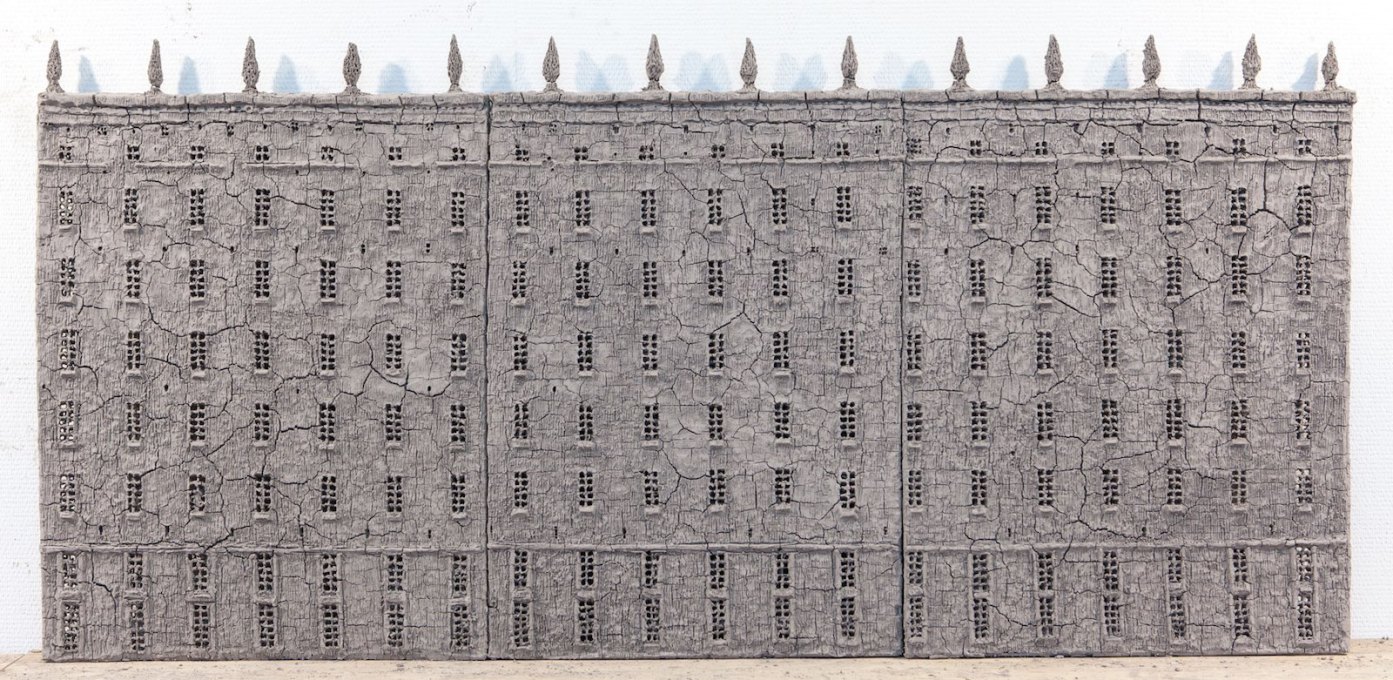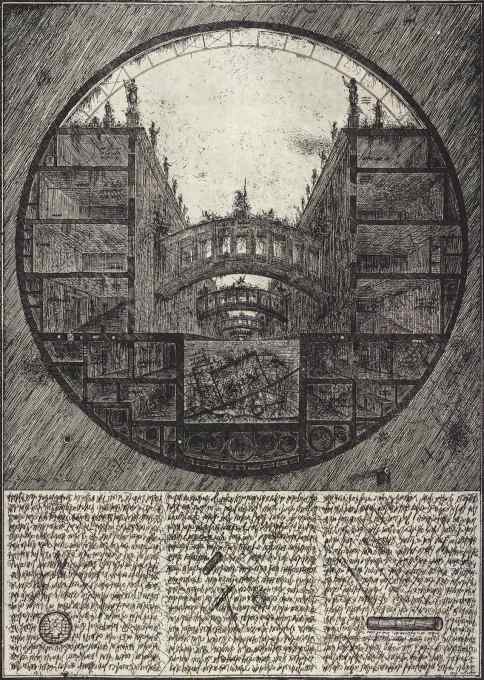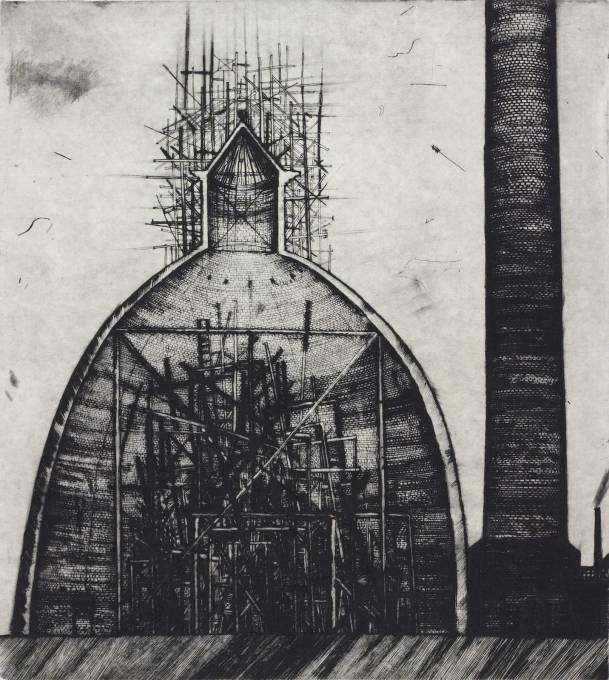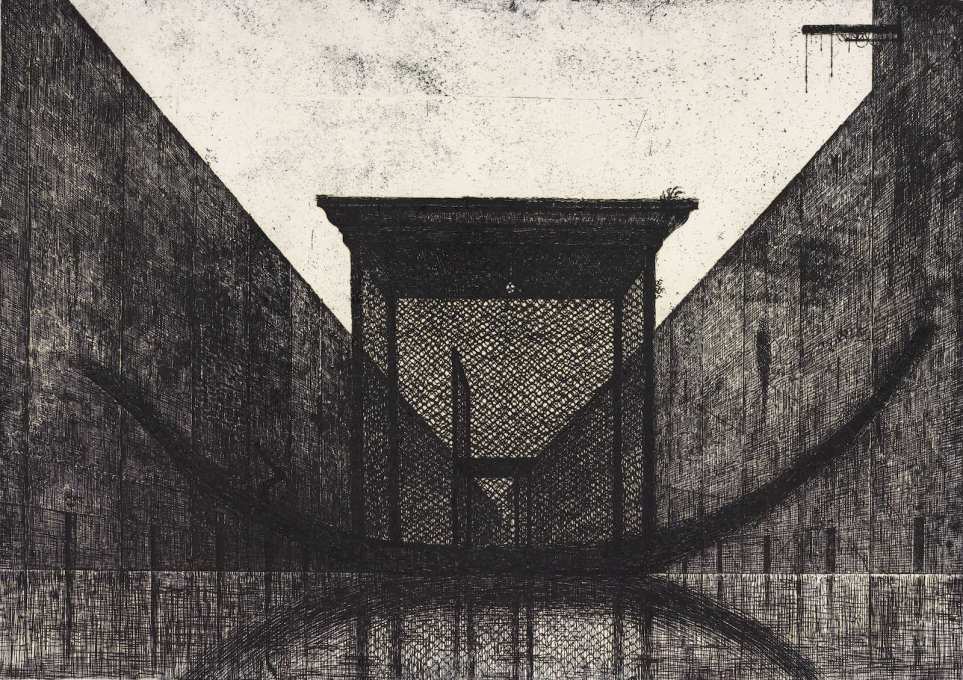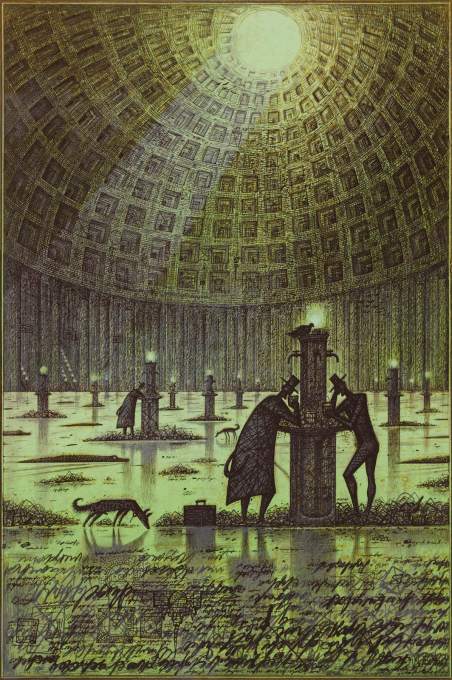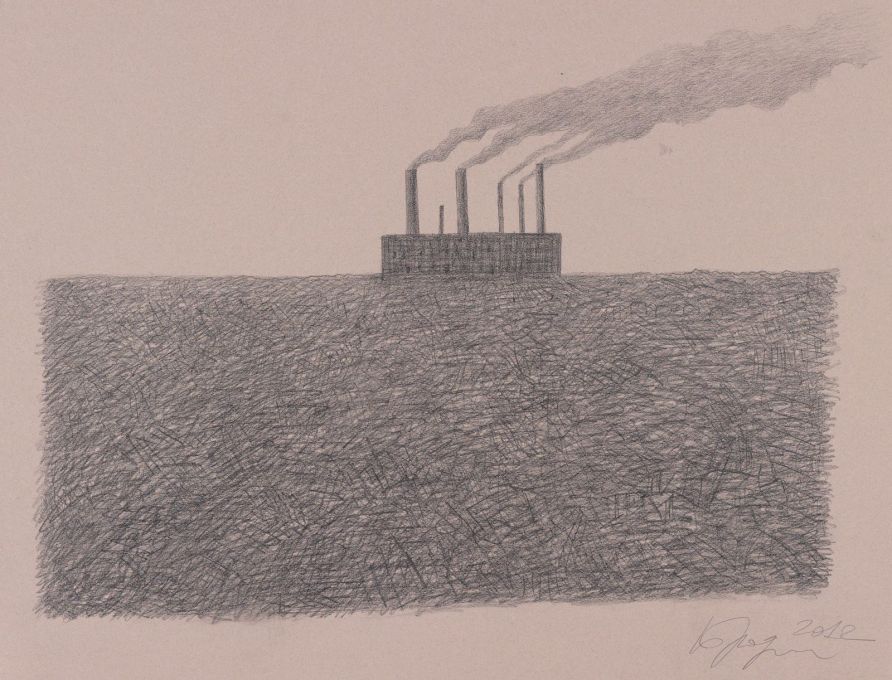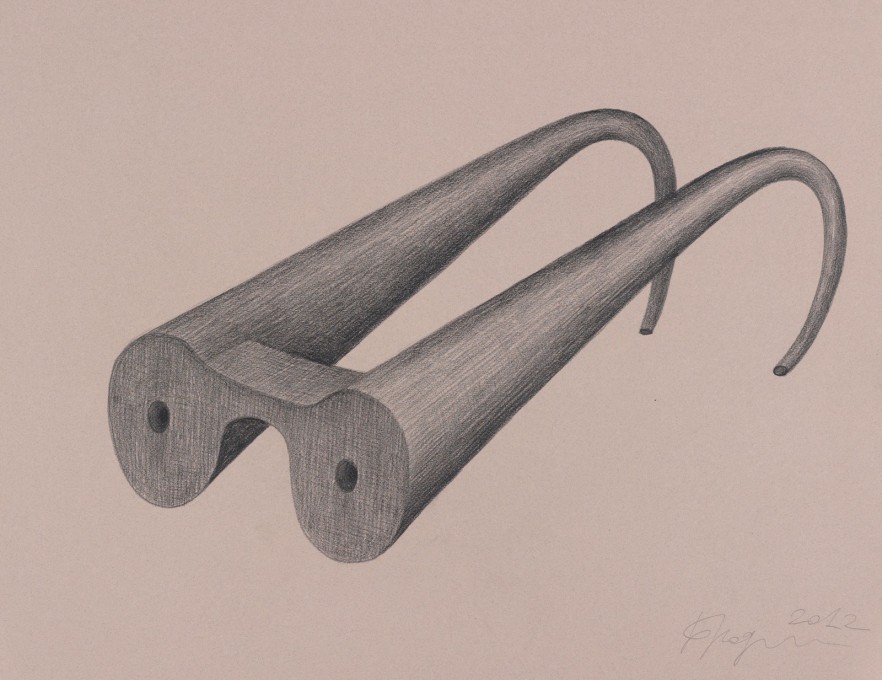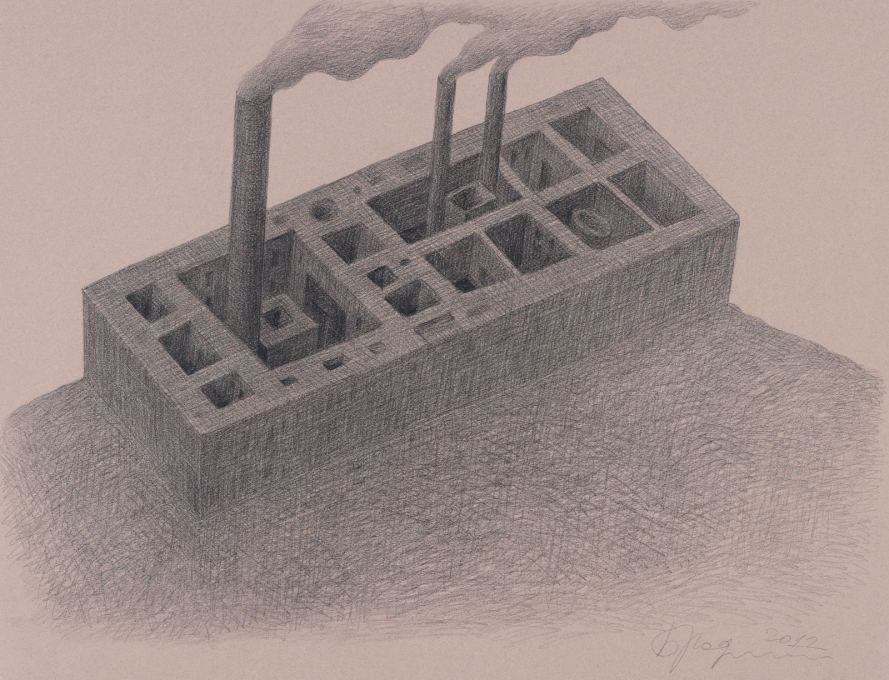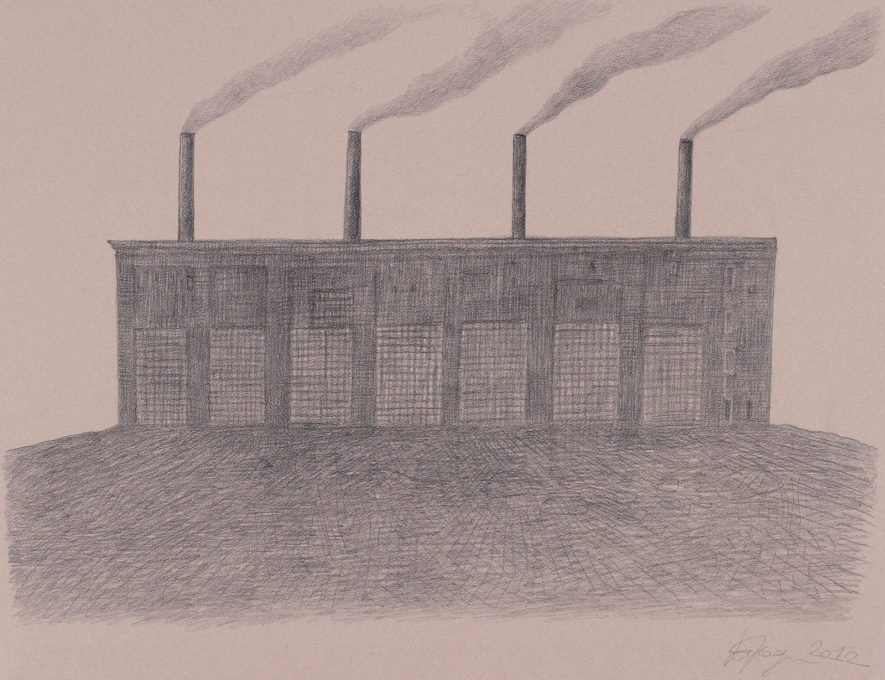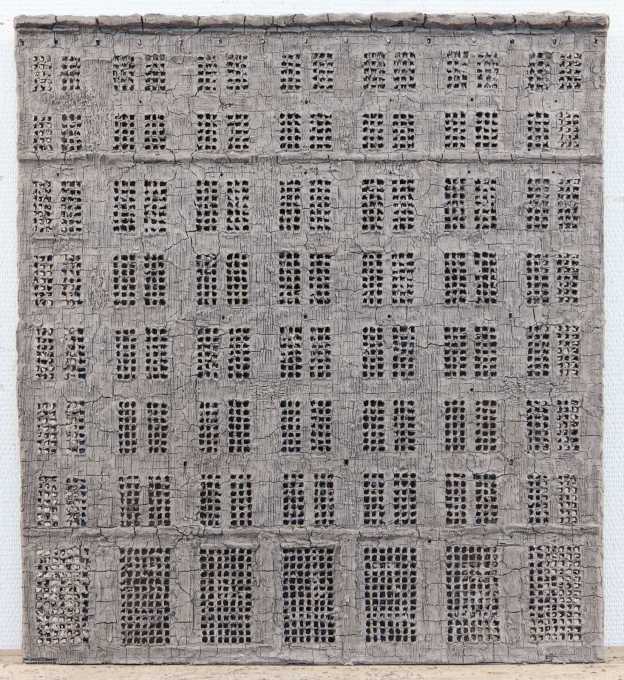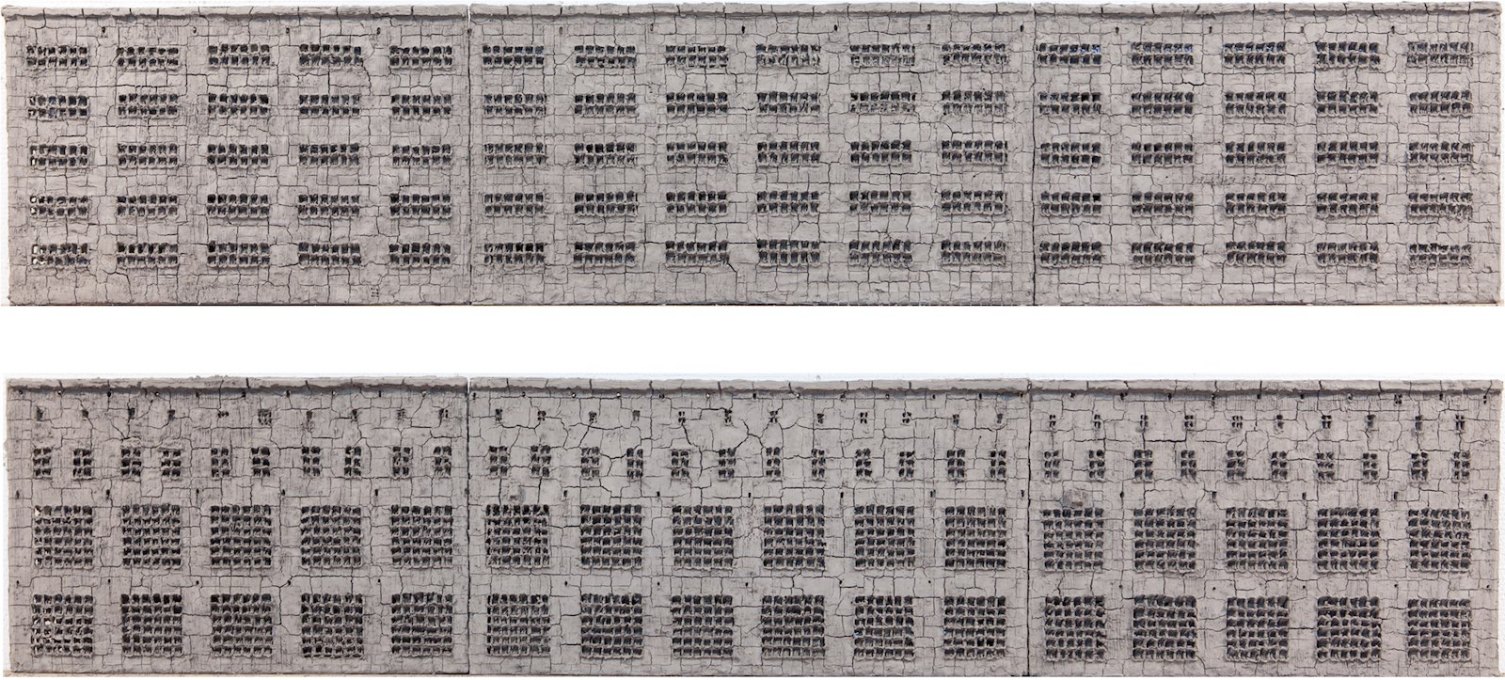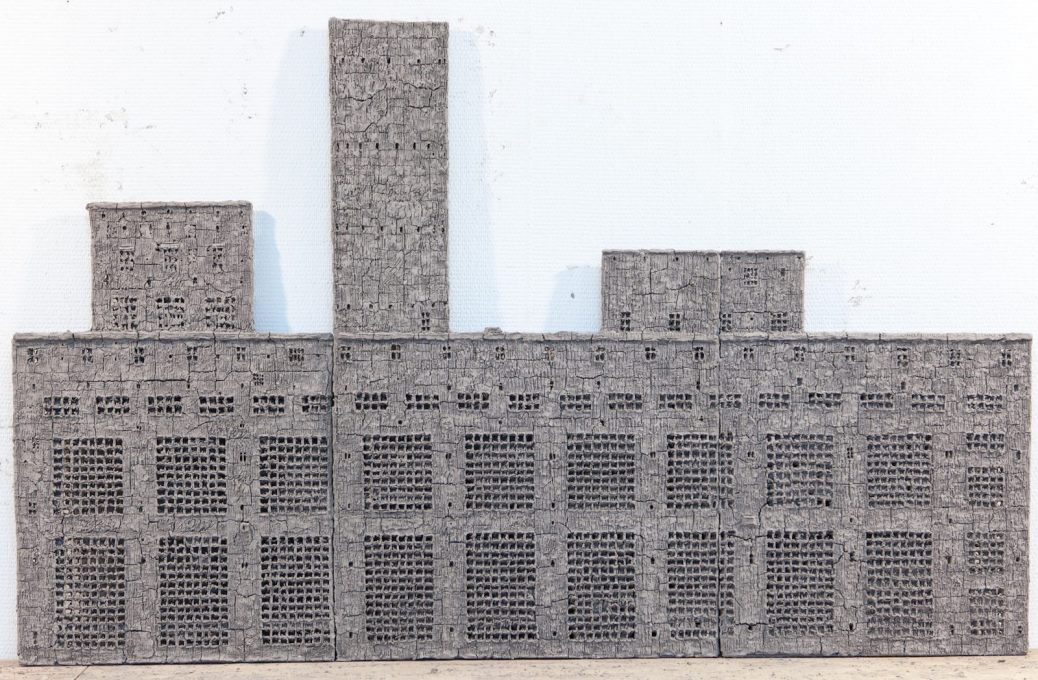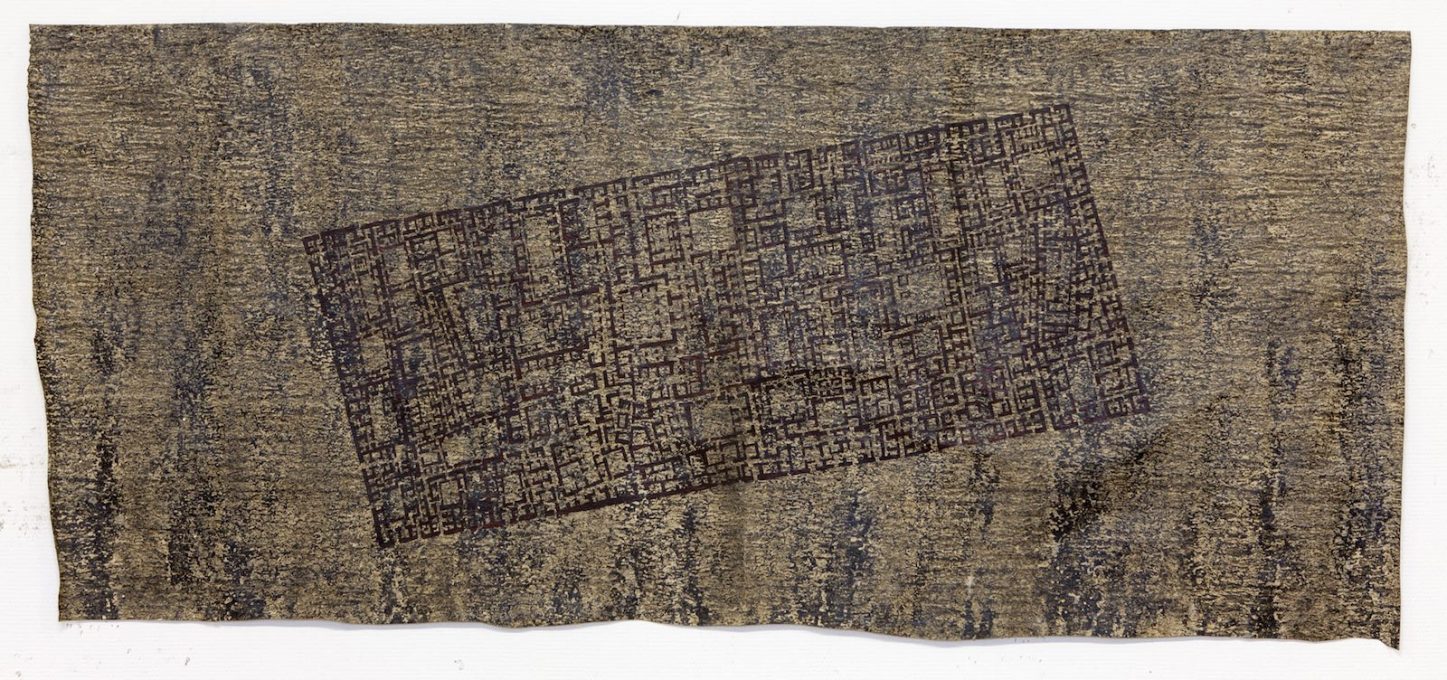Alexander Brodsky’s fantastical drawings and etchings have seen him become the standard bearer for the renaissance in architectural "capriccio" drawing over the last decades. We celebrate his unbuilt oeuvre here, showing a selection of work which is currently on view at the Tchoban Foundation in Berlin. Rob Wilson visited and found this veritable pope of “paper architecture” producing new wall-work that is paper-based no longer...
Russian architect Alexander Brodsky is best known for his “paper architecture” – enigmatic etchings and drawings of sometimes surreal, often dark, always fantastical interiors, structures and cityscapes – unbuilt and unbuildable architectural visions that has seen him become celebrated as a kind of Piranesi-du-jour.
These earlier works seemed to encapsulate the sense of capped-over chaos in the waning years of the Soviet Union and its immediate aftermath, and despite Brodsky having moved on to built projects in recent years, his “paper” speculations remain the core of his practice. Interestingly though, as seen in a small but wide-ranging exhibition at the Tchoban Foundation in Berlin, his recent wall-based work has moved beyond paper – or at least beyond predictable art supply-type paper, to include drawings on building materials like bituman roofing paper, as well as to frieze-type objects: building façades picked out in unfired clay tablets.
These are on display alongside examples of his earlier work in the exhibition, which provides a mini-retrospective, spanning the three decades between 1984 and 2014.
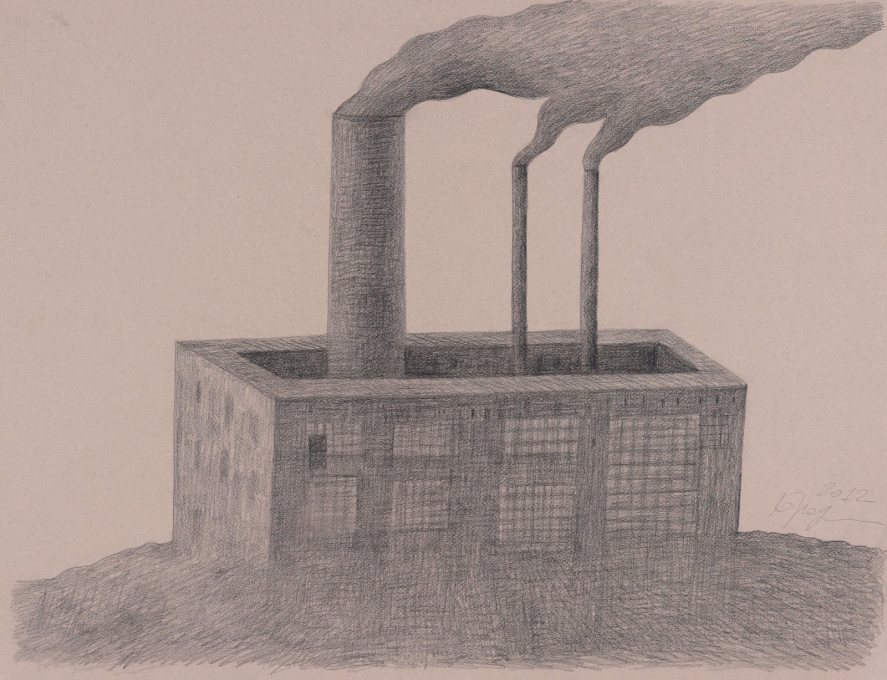
Early works include surreal etchings dating from the 1980s: hieratic heads with Easter Island-like tall headdresses – though here composed of stacked Babel-type cities – which appear as half dreams-beyond and half critiques of the repressive Soviet system.
These works are followed in the 1990s by intricate interiors and cityscapes of post-industrial decline – with sardonic titles like Place of Overall Prosperity (1998) – together with a series of panoramically fractured landscape etchings – the Vanishing Points series from 1997-9 – which present dense muddied horizontal crusts of ground that on closer inspection seem apocalyptic – half-resolving into fields of ruined buildings and figures.
A more recent body of pencil drawings dating from 2012 reprise the industrial theme – but these have a calmer, platonic sense: mute smoking factories with a removed, Léger-like air to them.
A further removal seems to have occurred in the most striking work: the recent clay wall friezes and bituman paper drawings dating from 2014. Here the removal seems to be the author himself: for these appear not so much as personal visions but archaic artefacts in themselves. So while the material of this new work has become more tactile, it feels more anonymous and detached, like the excavated authorless fragments of an ancient civilisation – from an ink plan like the tentative tracing of a Roman urban insula, to the parched crazed-surface of the Cuneiform-like clay tablet façades: each appearing to be an archaeological find with traces of buildings that are half-palace, half-prison.
While the dark intensity of Brosky’s earlier works has perhaps dissipated somewhat, this new work remains as powerful and disturbingly enigmatic as ever.
– Rob Wilson
Alexander Brodsky – Works
Until June 7
Tchoban Foundation
Museum for Architectural Drawing
Christinenstraße 18A
10119 Berlin




